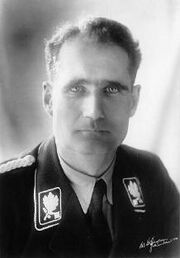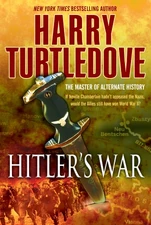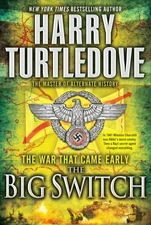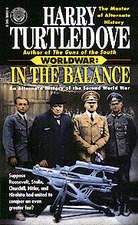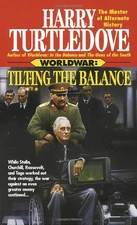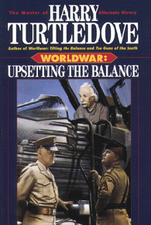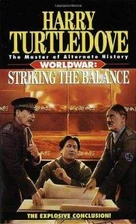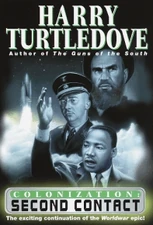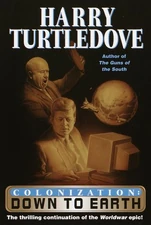This article is about the Deputy Führer of the Greater German Reich. For the chief guard of Auschwitz, see Rudolf Höss.
| ||||||||||||||||||||||||||||
Rudolf Hess (26 April 1894 - 17 August 1987) was a powerful political ally of Adolf Hitler and held the rank of Deputy Führer of the Greater German Reich. He joined the Nazi Party in 1920, and was present during the failed Beer Hall Putsch of 1923. While imprisoned, he helped Hitler write Mein Kampf. When the Nazis took power in 1933, Hess became became Deputy Führer, and was for a time, the third-most powerful man in Nazi Germany. He even signed into law the legislation that set the foundation for the Holocaust.
In May 1941, while World War II was raging, Hess made the curious decision to fly a Luftwaffe aircraft across the English Channel and land in Scotland. Upon landing, Hess asked to meet with the Duke of Hamilton for reasons no one ever learned. It was suggested at the time that he wished to open peace negotiations with the Duke, but if he did he did so without Hitler's consent.
Instead, Hess was arrested and held prisoner in Britain for the duration of the war. After the war, he was tried and convicted at Nuremberg for war crimes, a somewhat controversial event given his status as a prisoner. He was found dead in 1987 in his cell in Spandau Prison at the age of 93. His death was officially ruled a suicide, but this, like nearly everything else about Hess, is the center of debate. Hess has become a hero to the Neo-Nazi movement.
Rudolf Hess in The Man With the Iron Heart[]
| The Man With the Iron Heart POD: May 29, 1942; Relevant POD: May, 1945 | |
| Type of Appearance: | Direct |
In 1945, Rudolf Hess was extradited to Germany, where he would have been tried for war crimes and crimes against humanity by the Allied Forces in the Nuremberg Palace of Justice had the German Freedom Front not destroyed that building.[1]
The Allies tried again in 1946, preparing to try Hess and several other German leaders in Frankfurt. This failed when the GFF destroyed the American residency compound with a radium bomb. Again Hess and his colleagues were spared.[2]
The Soviet Union prepared a trial in Berlin the following year, but that was stopped when agents of the GFF crashed a cargo plane into the courtroom.[3]
Rudolf Hess in Worldwar[]
| Worldwar POD: May 30, 1942 | |
| Appearance(s): | Upsetting the Balance |
| Type of Appearance: | Contemporary(?) reference |
Straha's defection from the Race's Conquest Fleet to American soil in 1943, mirrored the flight of Rudolf Hess from Germany to Great Britain two years earlier. Barbara Yeager, whose husband Sam was one of Straha's main interrogators, noted this comparison for Sam's benefit.[4]
Rudolf Hess in The War That Came Early[]
| The War That Came Early POD: July 20, 1936; Relevant POD: September 29, 1938 | |
| Appearance(s): | The Big Switch; Last Orders |
| Type of Appearance: | Direct (TBS); Contemporary reference (LO) |
| Military Branch: | SS (World War II) |
In 1940, with the Second World War stalemated in the west, Rudolf Hess parachuted into Scotland with the blessing of Adolf Hitler and the German government to negotiate an alliance between Germany and Britain. Hess injured his ankle when he landed, and was immediately taken into custody by Welsh Sgt. Alistair Walsh, who'd just happened to be in Scotland on leave. Walsh escorted Hess to the authorities. During much of their journey, Hess, who spoke fluent English, tried to convince Walsh of the value of an alliance between their two countries in the fight against the Soviet Union. Walsh finally ordered Hess to be silent.[5]
While Walsh was not receptive, the government of Prime Minister Neville Chamberlain was, despite protests from War Minister Winston Churchill. By mid-1940, after Churchill was hit and killed by a drunk driver, the British and the French governments concluded a peace with Germany and began a war with the USSR.
However, the achievement was short-lived: by the spring of 1941, Britain had undergone a military coup, and was quickly back at war with Germany. France turned again against Germany in the winter of 1941.
The war continued to turn against Germany throughout 1942 and 1943. Dissatisfaction with the course of events at home and abroad led to a group of senior military and political leaders to form the Committee for the Salvation of the German Nation. After Hitler declared war on the United States in March 1944, the Committee decided the war was unwinnable and took action.[6] The following month, when Hitler gave a broadcast speech in Münster about the insurrection taking place there, he was killed by a bomb planted by the Committee. Immediately the Committee took over the radio broadcast and their leader Heinz Guderian announced Hitler's death and the Committee's takeover.[7] Hess was the only Nazi leader successfully arrested by the Committee; Heinrich Himmler was killed, Hermann Göring went missing, and Josef Goebbels took refuge in the Italian embassy in Berlin.[8]
Literary comment[]
Some speculation is required, as Hess is the only Nazi leader whose fate is not discussed. As the text pointedly tells the reader what happens to the other Nazi leaders, the administrators have taken this to mean that Hess was in fact arrested without incident.
References[]
- ↑ The Man With the Iron Heart, pg. 108.
- ↑ Ibid., pg. 260.
- ↑ Ibid., pg. 407-8.
- ↑ Upsetting the Balance, pg. 85, mmp.
- ↑ The Big Switch, pg 150-51.
- ↑ Last Orders, pg. 311, HC.
- ↑ Ibid, pgs. 299-300.
- ↑ Ibid., pg. 300, HC.
| Party political offices (OTL) | ||
|---|---|---|
| Preceded by Position created |
Deputy Führer of Germany 1933-1941 |
Succeeded by Martin Bormann (as Chief of the Parteikanzlei) |
| Party political offices (The War That Came Early) | ||
| Preceded by Position created |
Deputy Führer of Germany 1933-1944 |
Succeeded by Position abolished |
| |||||||||||||||||
| ||||||||||||||||||||||
| |||||||||||||||||||||||||
